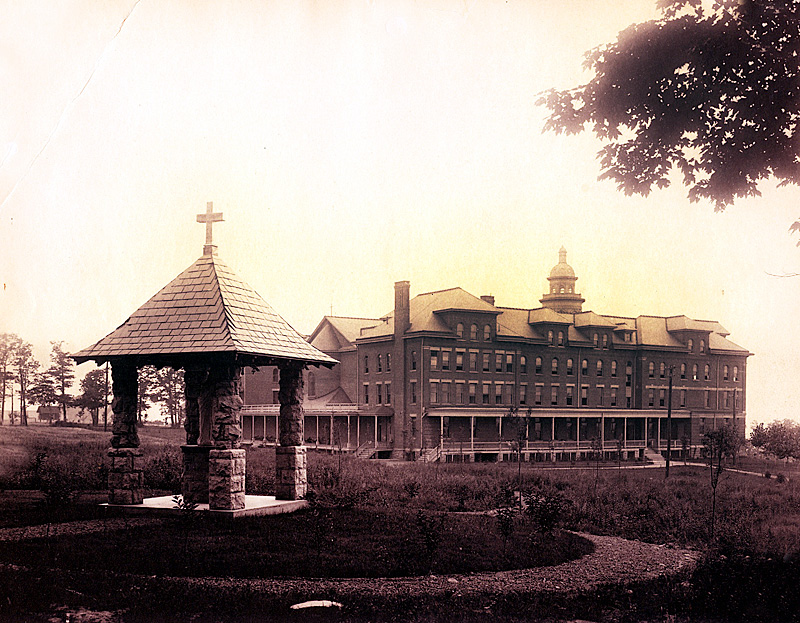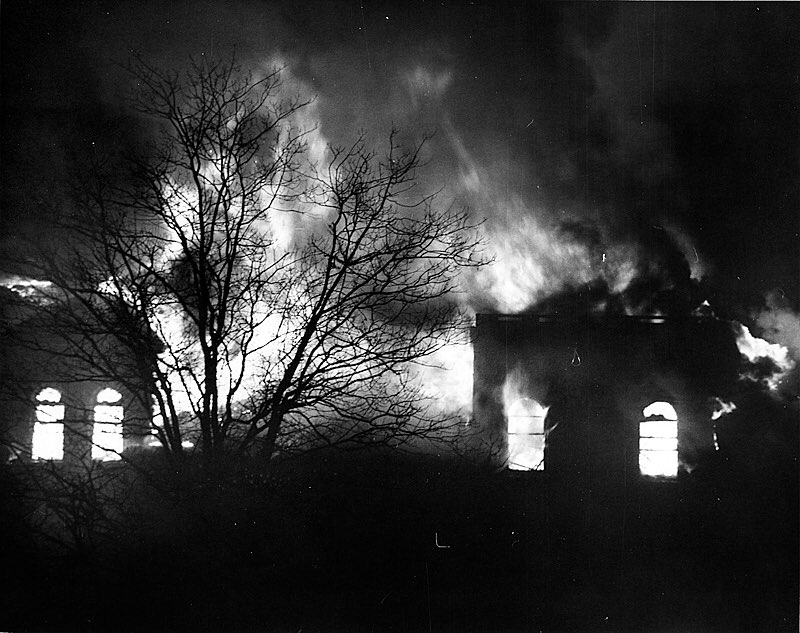IHM Congregation marks 50 years since Motherhouse fire
Photo credit/ Courtesy of the Marywood University Archives
Before the fire, the Motherhouse and Seminary was a four-story building that included a chapel, novitiate classrooms, dining rooms, dorms and faculty housing.
February 22, 2021
Today marks the 50th anniversary of a fire on campus that ravaged the Motherhouse and Seminary.
The Motherhouse and Seminary opened thirteen years before Marywood University— then Marywood College—opened. According to the President of the Sisters, Servants of the Immaculate Heart of Mary congregation, Sr. Ellen Maroney, IHM, the Motherhouse was built in the hope that it would be a place of faith and education.
The story of the Motherhouse began in 1893 when Mother Magdalen Jackson purchased thirty acres of land. After the purchase, the IHM sisters persevered for the next nine years to see the building completed.
Maroney explained that the sisters who oversaw the building’s construction endured a great deal before it finally opened on Sept. 8, 1902.
“The sisters who built the Motherhouse did so with a lot of self-sacrifice and vision,” said Maroney.
According to Sr. Margaret Gannon, IHM, who had lived in the Motherhouse periodically, one of these struggles was instigated by the Lackawanna and Wyoming Valley Railroad.
“They wanted to use eminent domain to run a track right past the Motherhouse,” said Gannon.
After pleas from the sisters, the railroad company dropped the plans.
Eventually, a four-story building arose. The Motherhouse and Seminary included a chapel, novitiate classrooms, dining rooms, dorms and faculty housing.
Gannon explained that the Motherhouse was much more than just a building.
“This was a home,” said Gannon. “For many sisters, it was their first IHM home, and it was also a place where sisters would have their funerals. So this was a constant for the sisters from life to death.”
Gannon explained that because the Motherhouse and Seminary were such a center of gathering for the congregation, the fire was a heart-breaking moment.
“We had to find ways to move on from there, and for some sisters, it was very difficult,” said Gannon.
Maroney explained that a significant memory that stood out to her about that time was how much the community came out to help and support the congregation.
“Everyone from faculty to first responders, to neighbors, wanted to be there to help us,” said Maroney.
According to the Scranton Times-Tribune, the fire was “caused by some unknown substance coming into contact with a steam-type radiator.” There were sisters and first responders who were injured due to the fire; however, there were no deaths.
Maroney said that this fire stood as a representation of the strength of the congregation.
“It showed that that building is not the congregation,” said Maroney. “We are living people, and we were able to move on.”
Today the Motherhouse and Seminary Morgan Memorial Garden stand where the Motherhouse once stood. Maroney said she feels a sense of peace whenever she is in the garden. She also explained that the Memorial Garden still serves the same purpose as the Motherhouse.
“I think that Memorial Garden is a wonderful tribute,” said Maroney. “That space is still the heart of the university, much like the Motherhouse once was.”
Gannon also noted that the Memorial Garden represents much of the same IHM spirit and outlook on life.
“We build on what has passed,” said Gannon. “We only look to the past to plant the seeds of the future.”
In honor of the anniversary, the IHM sisters have created a virtual tribute to the Motherhouse and those who called it home.
Contact the writer: [email protected]
Twitter: @BrianaRyanTWW






